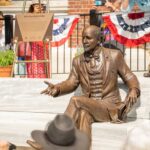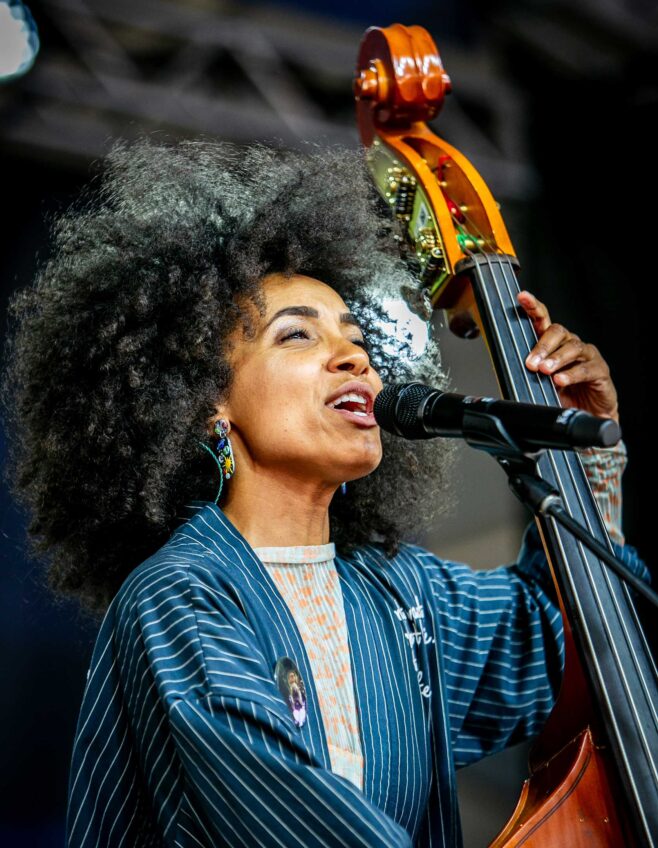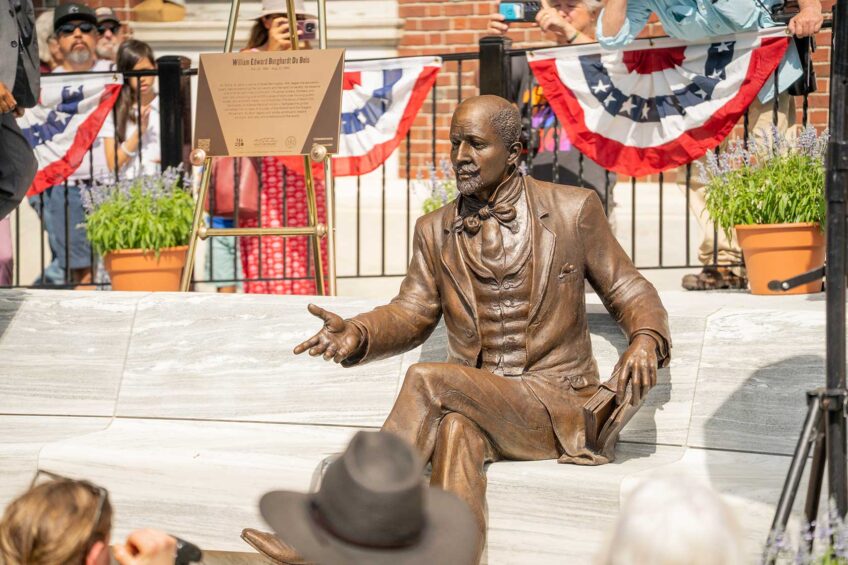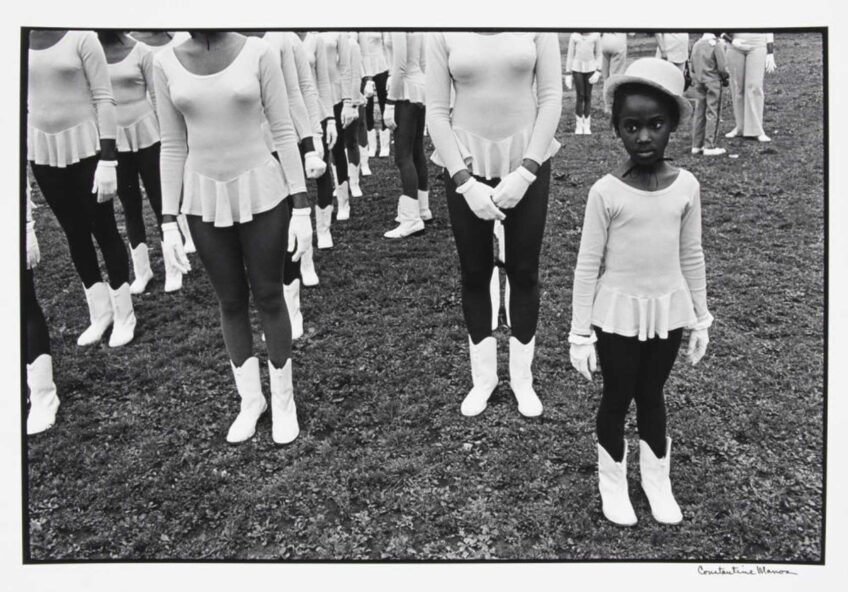
“Vernacular Glamour,” showing at the Cambridge Art Association’s Kathryn Schultz Gallery through Feb. 19, showcases a cross section of Latinx artists exploring camp, high fashion, popular culture and queer experiences. Curated by Juan Omar Rodriguez, the exhibition probes what is undervalued by supposed tastemakers and where economic, racial, sexual and gender lines factor into those valuations.
The exhibition features work by Juan Arango Palacios, Maria Yolanda Liebana, Perla Mabel, Chloe Luisa Piñero, Ginger Q, Rixy, Moises Salazar and Jhona Xaviera.

Juan Arango Palacios, “Queers with Tears,” colored pencil and rhinestones on paper, 21″ x 17″ PHOTO: COURTESY OF CAMBRIDGE ART ASSOCIATION
Moises Salazar’s work is bold, colorful and textural. The artist uses clay, paper maché, glitter crochet, faux fur and florals to create soft, welcoming visual spaces. These spaces represent the kind of warmth and comfort that Salazar finds lacking in the United States as a queer, non-binary artist and a first-generation Mexican American.
“My art is a vehicle to celebrate the majesty of cultural heritage contrasted with challenges of living safely in the United States as a member of the immigrant and queer communities,” says Salazar in an artist statement. “Reflecting on the lack of space and agency they possess, I present my pieces in environments where they can thrive and be safe.”
While Salazar creates their own artistic safe spaces, Chloe Luisa Piñero utilizes her collage and mixed-media assemblage process to examine her own identity, particularly in the context of sexuality, social class and cultural “norms.” Piñero’s pieces mix materials like dollar-store knick-knacks and crushed beauty products with advertisements and slices of graphic sexual imagery.

Rixy, “To Not Give a Mango’s Damn,” aerosol, acrylic, ink, pastels, pencil, nail polish, velveted UV paper, brass hardware, leather twill, synthetic hair, and cowrie shells on recycled and sewn cardboard. 66″ x 70″ PHOTO: COURTESY OF CAMBRIDGE ART ASSOCIATION
These juxtapositions examine the ways in which women, people of color and those in specific socio-economic brackets are depicted in media and cultural spheres, versus the way individuals connect with their own identity. Viewing these images, art appreciators are forced to assess the value judgments they themselves assign to each component of Piñero’s composition, and where those perceived values are coming from.
“Vernacular Glamour” is part of the CAA’s Platform Curatorial Opportunity series, an annual exhibition opportunity for emerging or established curators to explore a new concept at Kathryn Schultz Gallery with financial and institutional support from CAA. Rodriguez has previously worked on exhibitions with Boston CyberArts, the Boston LGBTQIA+ Artist Alliance and the School of the Museum of Fine Arts at Tufts.
Accessible in person and online, “Vernacular Glamour” provides a visual and intellectual feast examining the societal confines placed on queer and Latinx communities, and the ways artists forge their own kind of American dream.







